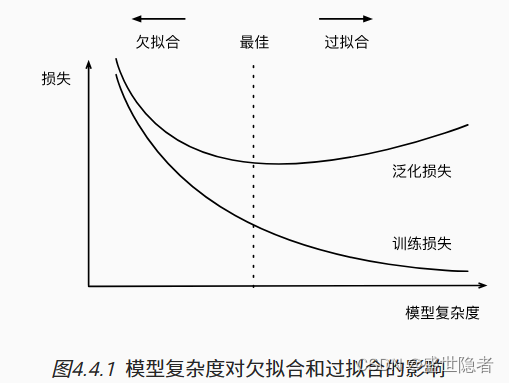由线性代数中的克拉默法则可知:
x
=
D
x
D
x=frac{Dx}{D}
x=DDx
y
=
D
y
D
y=frac{Dy}{D}
y=DDy
z
=
D
z
D
z=frac{Dz}{D}
z=DDz
2.软件操作
通过菜单栏的'Tools > Fit > Sphere'找到该功能。

选择一个或多个点云,然后启动此工具。CloudCompare将在每个点云上拟合球体基元。在控制台中,将输出以下信息:
center(也可以在球体实体属性中找到球体边界框的中心)radius(也可以在sphere实体属性中找到)- 球体拟合
RMS(在默认球体实体名称中调用)注意:理论上球体拟合算法可以处理高达50%的异常值。
球形点云

拟合结果

控制台输出

3.算法源码
GeometricalAnalysisTools::ErrorCode GeometricalAnalysisTools::DetectSphereRobust(
GenericIndexedCloudPersist* cloud,
double outliersRatio,
CCVector3& center,
PointCoordinateType& radius,
double& rms,
GenericProgressCallback* progressCb/*=nullptr*/,
double confidence/*=0.99*/,
unsigned seed/*=0*/)
{
if (!cloud)
{
assert(false);
return InvalidInput;
}
unsigned n = cloud->size();
if (n < 4)
return NotEnoughPoints;
assert(confidence < 1.0);
confidence = std::min(confidence, 1.0 - FLT_EPSILON);
//we'll need an array (sorted) to compute the medians
std::vector<PointCoordinateType> values;
try
{
values.resize(n);
}
catch (const std::bad_alloc&)
{
//not enough memory
return NotEnoughMemory;
}
//number of samples
unsigned m = 1;
const unsigned p = 4;
if (n > p)
{
m = static_cast<unsigned>(log(1.0 - confidence) / log(1.0 - pow(1.0 - outliersRatio, static_cast<double>(p))));
}
//for progress notification
NormalizedProgress nProgress(progressCb, m);
if (progressCb)
{
if (progressCb->textCanBeEdited())
{
char buffer[64];
sprintf(buffer, "Least Median of Squares samples: %u", m);
progressCb->setInfo(buffer);
progressCb->setMethodTitle("Detect sphere");
}
progressCb->update(0);
progressCb->start();
}
//now we are going to randomly extract a subset of 4 points and test the resulting sphere each time
if (seed == 0)
{
std::random_device randomGenerator; // non-deterministic generator
seed = randomGenerator();
}
std::mt19937 gen(seed); // to seed mersenne twister.
std::uniform_int_distribution<unsigned> dist(0, n - 1);
unsigned sampleCount = 0;
unsigned attempts = 0;
double minError = -1.0;
std::vector<unsigned> indexes;
indexes.resize(p);
while (sampleCount < m && attempts < 2*m)
{
//get 4 random (different) indexes
for (unsigned j = 0; j < p; ++j)
{
bool isOK = false;
while (!isOK)
{
indexes[j] = dist(gen);
isOK = true;
for (unsigned k = 0; k < j && isOK; ++k)
if (indexes[j] == indexes[k])
isOK = false;
}
}
assert(p == 4);
const CCVector3* A = cloud->getPoint(indexes[0]);
const CCVector3* B = cloud->getPoint(indexes[1]);
const CCVector3* C = cloud->getPoint(indexes[2]);
const CCVector3* D = cloud->getPoint(indexes[3]);
++attempts;
CCVector3 thisCenter;
PointCoordinateType thisRadius;
if (ComputeSphereFrom4(*A, *B, *C, *D, thisCenter, thisRadius) != NoError)
continue;
//compute residuals
for (unsigned i = 0; i < n; ++i)
{
PointCoordinateType error = (*cloud->getPoint(i) - thisCenter).norm() - thisRadius;
values[i] = error*error;
}
const unsigned int medianIndex = n / 2;
std::nth_element(values.begin(), values.begin() + medianIndex, values.end());
//the error is the median of the squared residuals
double error = static_cast<double>(values[medianIndex]);
//we keep track of the solution with the least error
if (error < minError || minError < 0.0)
{
minError = error;
center = thisCenter;
radius = thisRadius;
}
++sampleCount;
if (progressCb && !nProgress.oneStep())
{
//progress canceled by the user
return ProcessCancelledByUser;
}
}
//too many failures?!
if (sampleCount < m)
{
return ProcessFailed;
}
//last step: robust estimation
ReferenceCloud candidates(cloud);
if (n > p)
{
//e robust standard deviation estimate (see Zhang's report)
double sigma = 1.4826 * (1.0 + 5.0 /(n-p)) * sqrt(minError);
//compute the least-squares best-fitting sphere with the points
//having residuals below 2.5 sigma
double maxResidual = 2.5 * sigma;
if (candidates.reserve(n))
{
//compute residuals and select the points
for (unsigned i = 0; i < n; ++i)
{
PointCoordinateType error = (*cloud->getPoint(i) - center).norm() - radius;
if (error < maxResidual)
candidates.addPointIndex(i);
}
candidates.resize(candidates.size());
//eventually estimate the robust sphere parameters with least squares (iterative)
if (RefineSphereLS(&candidates, center, radius))
{
//replace input cloud by this subset!
cloud = &candidates;
n = cloud->size();
}
}
else
{
//not enough memory!
//we'll keep the rough estimate...
}
}
//update residuals
{
double residuals = 0;
for (unsigned i = 0; i < n; ++i)
{
const CCVector3* P = cloud->getPoint(i);
double e = (*P - center).norm() - radius;
residuals += e*e;
}
rms = sqrt(residuals/n);
}
return NoError;
}
4.相关代码
[1]C++实现:PCL RANSAC拟合空间3D球体
[2]python实现:Open3D——RANSAC三维点云球面拟合
[3] Open3D 最小二乘拟合球
[4] Open3D 非线性最小二乘拟合球
原文地址:https://blog.csdn.net/qq_36686437/article/details/135489350
本文来自互联网用户投稿,该文观点仅代表作者本人,不代表本站立场。本站仅提供信息存储空间服务,不拥有所有权,不承担相关法律责任。
如若转载,请注明出处:http://www.7code.cn/show_55922.html
如若内容造成侵权/违法违规/事实不符,请联系代码007邮箱:suwngjj01@126.com进行投诉反馈,一经查实,立即删除!







